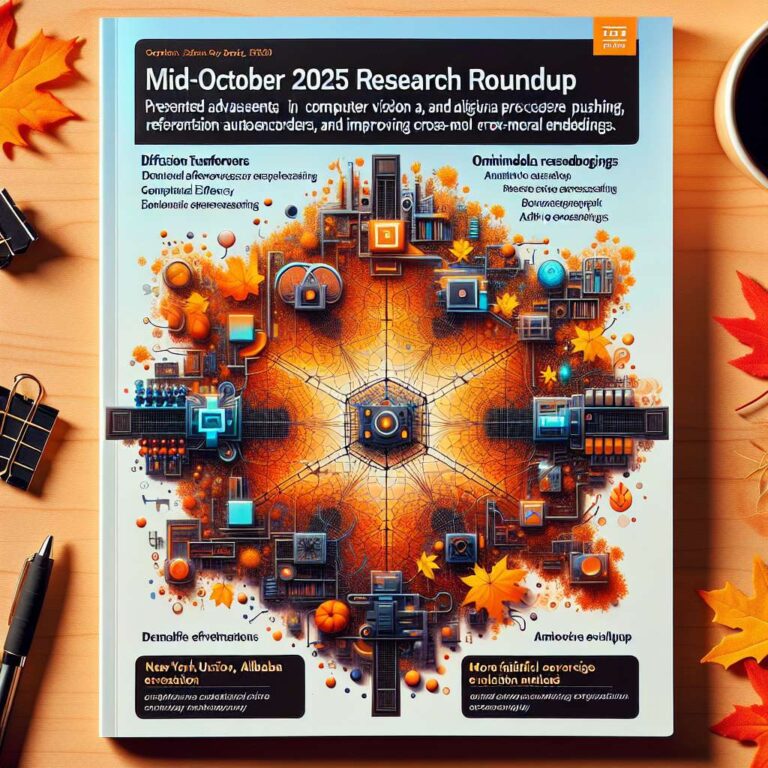This weekly digest spotlights influential large language model research released during the third week of October 2025. The selections span model optimization and scaling, multimodal representation learning, and evaluation, with an emphasis on methods that push efficiency and quality while improving how systems are assessed. The table of contents groups work into progress and technical reports, vision language models, reasoning, and post training and reinforcement learning.
A New York University paper introduces diffusion transformers with representation autoencoders, replacing the conventional Stable Diffusion VAE bottleneck with a frozen representation encoder such as DINO or SigLIP paired with a lightweight trained decoder. The resulting representation autoencoder produces a high-dimensional, semantically rich latent space that benefits the diffusion process. To make diffusion transformers trainable in this higher-dimensional regime, the authors identify a key design rule that the model’s width must match or exceed the latent token dimension and propose practical fixes: a wide diffusion head variant (DiTDH) to avoid quadratic compute growth, a dimension-dependent noise schedule, and noise-augmented decoding to harden the decoder against noisy inputs.
The approach yields strong empirical gains. On ImageNet 256×256, the model achieves a state-of-the-art FID of 1.51 without guidance and 1.13 with guidance, and reports 1.13 FID at 512×512. Training converges up to 47 times faster than SiT-XL and 16 times faster than representation alignment methods such as REPA-XL. The representation autoencoder also delivers superior reconstructions at a fraction of the computational cost, reported as 14 times more efficient, while inheriting the semantics of its pre-trained encoder.
From Alibaba’s Damo Academy, a second paper proposes LCO-EMB, a language-centric framework for omnimodal embeddings, and formulates the generation-representation scaling law. The law posits that embedding quality scales with the generative capability of the underlying multimodal large language model. Evidence includes fine-tuning an off-the-shelf model (Qwen2.5-Omni) using contrastive learning on text-only data, which improves text embeddings and generalizes those gains to image, audio, and video spaces. LCO-EMB applies parameter-efficient LoRA on language-centric data to refine pre-aligned generative embeddings, achieves new state-of-the-art results on the MIEB-Lite benchmark, introduces the SeaDoc visual document retrieval benchmark, and shows that continual generative pre-training before contrastive alignment further boosts representation performance.
A third study, from Wuhan University and collaborators, presents DITING, a benchmark and multi-agent evaluation framework called AgentEval for web novel translation. It targets narrative and cultural fidelity rather than surface-level similarity, aiming to more faithfully assess translation quality for long-form literary content produced by language models. Taken together, these papers illustrate rapid advances in generative efficiency, multimodal embedding quality, and domain-specific evaluation.

